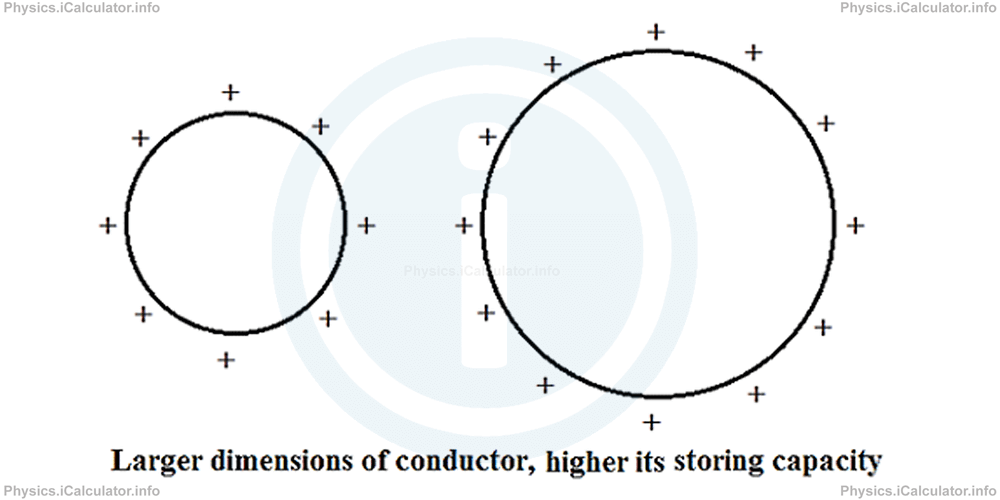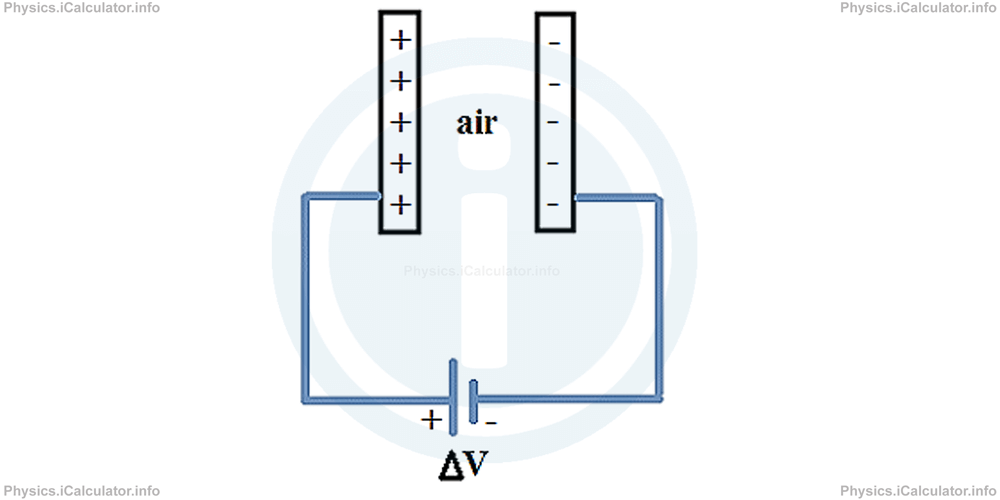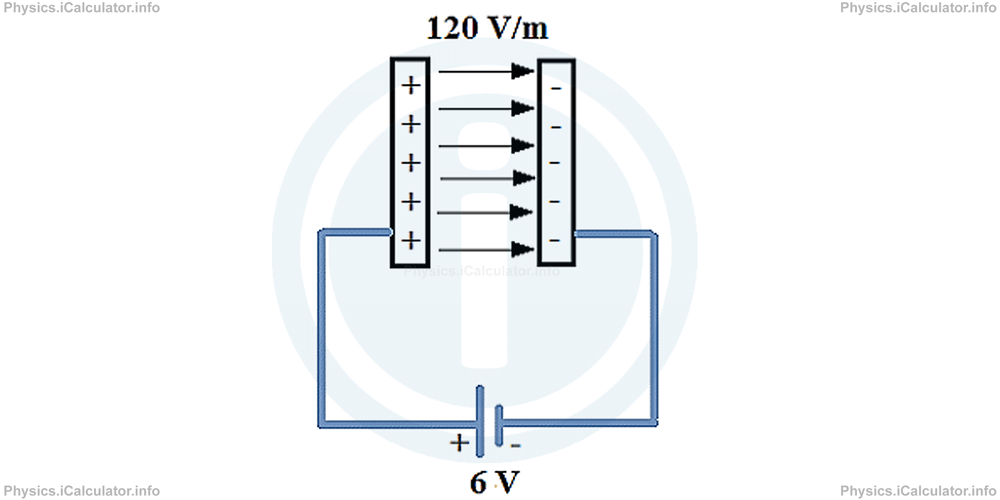Menu
Physics Lesson 14.7.1 - Capacitance
Please provide a rating, it takes seconds and helps us to keep this resource free for all to use
Welcome to our Physics lesson on Capacitance, this is the first lesson of our suite of physics lessons covering the topic of Capacitance and Capacitors, you can find links to the other lessons within this tutorial and access additional physics learning resources below this lesson.
Capacitance
We have explained in the tutorial 14.1 "Electric Charges. Conductors and Insulators", that when some extra charge is given to a conductor, the charge spreads out on the outer surface of conductor. As a result, the conductor is charged by a single type of charge only. It is clear that greater the dimensions of conductor, more extra charges it can carry.

One of methods used for charging a conductor is by connecting it to an electric source (for example a battery). This is because a potential difference is applied on it. As a result, the conductor accumulates opposite charges on its sides. As discussed earlier, this method is called induction and the extra charges produced through this method are known as induced charges.
However, in order to produce long lasting extra charges, this method requires an insulating layer between the opposite groups of charges, otherwise they mix up immediately after the source stops providing free charges. The best (and cheapest) method is to use air as an insulating layer. This implies taking a two-pieces conductor which has a gap at middle and connecting each of the pieces with the poles of a battery. We have seen many examples in the previous tutorials where two parallel plates at a distance d between them are connected to the opposite poles of a battery. As a result, plates are charged by opposite signs.

The insulating layer (here the air) between the two charged plates is known as dielectric. Vacuum is the best dielectric but it is not always possible to use it. Therefore, air is often used for this purpose because it owns satisfactory dielectric properties (it is a good insulator).
By definition, the amount of charge a conductor can store when a potential difference is applied is known as capacitance.
From experiments, it is found that the amount of charge accumulated on the conductor increases with the increase in potential difference. Therefore, the capacitance C of a conductor is
The unit of capacitance (here Coulomb per Volt) is known as Farad [F].
Capacitors are shown in electric circuits through the symbols
Example 1
What is the capacitance of the parallel plate system shown in the figure if the plates attract each other by a 240 N force?

Solution 1
From the figure, we see that potential difference and electric field are given. We have ΔV = 6V and E = 120 V/m. Thus, given that electric field E is calculated by
we obtain for the electric charge Q on the plates
= 240 N/120 V/m
= 2 C
Therefore, the capacitance of the system is
= 2C/6V
= 0.333F
Remark!
Do not confuse the symbol of capacitance C used in formulae with the unit of electric charge [C], which stands for Coulomb.
Since Coulomb is a very large unit and the voltage operating values are a few volts, Farad is a large unit too. Typical values of capacitance vary from a few microfarads (10-6 F) to a few pico-farads (10-12 F).
You have reached the end of Physics lesson 14.7.1 Capacitance. There are 4 lessons in this physics tutorial covering Capacitance and Capacitors, you can access all the lessons from this tutorial below.
More Capacitance and Capacitors Lessons and Learning Resources
Whats next?
Enjoy the "Capacitance" physics lesson? People who liked the "Capacitance and Capacitors lesson found the following resources useful:
- Capacitance Feedback. Helps other - Leave a rating for this capacitance (see below)
- Electrostatics Physics tutorial: Capacitance and Capacitors. Read the Capacitance and Capacitors physics tutorial and build your physics knowledge of Electrostatics
- Electrostatics Revision Notes: Capacitance and Capacitors. Print the notes so you can revise the key points covered in the physics tutorial for Capacitance and Capacitors
- Electrostatics Practice Questions: Capacitance and Capacitors. Test and improve your knowledge of Capacitance and Capacitors with example questins and answers
- Check your calculations for Electrostatics questions with our excellent Electrostatics calculators which contain full equations and calculations clearly displayed line by line. See the Electrostatics Calculators by iCalculator™ below.
- Continuing learning electrostatics - read our next physics tutorial: Electric Charges. Conductors and Insulators
Help others Learning Physics just like you
Please provide a rating, it takes seconds and helps us to keep this resource free for all to use
We hope you found this Physics lesson "Capacitance and Capacitors" useful. If you did it would be great if you could spare the time to rate this physics lesson (simply click on the number of stars that match your assessment of this physics learning aide) and/or share on social media, this helps us identify popular tutorials and calculators and expand our free learning resources to support our users around the world have free access to expand their knowledge of physics and other disciplines.